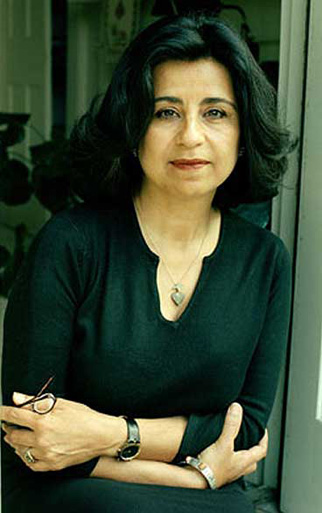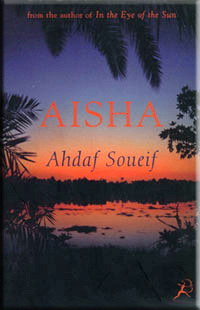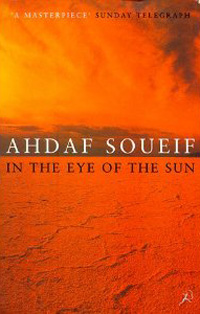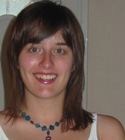
 Since the publication of her last novel in 1999, Ahdaf Soueif has passionately
dedicated herself to reportage, and in particular, to the cause of Palestine. In an interview
with book blogger Black and Gray in 2007, she said "I write about the things I care about, the things that I want to explore".
Whether this is in fiction or non-fiction journalism, activism or reportage, Soueif always writes forthrightly and with passion, crossing
cultural boundaries, addressing political and social wrongs head on, looking for what she calls the middle ground or "mezzaterra—" that
meeting point between Western and Occidental values, where she argues that most sensible, rational people's opinions of the world meet.
Most recently, Soueif was on her way as part of a convoy to Palestine to deliver much-needed supplies to the Palestinian people in
Gaza, and to take part in the Palestine Festival of Literature that she founded in 2008. All of this might explain why Ahdaf Soueif
has not written a novel for over ten years; she explains it in better terms in her nonfiction book Mezzaterra: "I think of myself as a writer of fiction. But fiction
follows its own rhythms. In my experience, fiction … will not be born today out of today's events".
Since the publication of her last novel in 1999, Ahdaf Soueif has passionately
dedicated herself to reportage, and in particular, to the cause of Palestine. In an interview
with book blogger Black and Gray in 2007, she said "I write about the things I care about, the things that I want to explore".
Whether this is in fiction or non-fiction journalism, activism or reportage, Soueif always writes forthrightly and with passion, crossing
cultural boundaries, addressing political and social wrongs head on, looking for what she calls the middle ground or "mezzaterra—" that
meeting point between Western and Occidental values, where she argues that most sensible, rational people's opinions of the world meet.
Most recently, Soueif was on her way as part of a convoy to Palestine to deliver much-needed supplies to the Palestinian people in
Gaza, and to take part in the Palestine Festival of Literature that she founded in 2008. All of this might explain why Ahdaf Soueif
has not written a novel for over ten years; she explains it in better terms in her nonfiction book Mezzaterra: "I think of myself as a writer of fiction. But fiction
follows its own rhythms. In my experience, fiction … will not be born today out of today's events".
Ahdaf Soueif was born in Cairo in 1950, and lived in England between the ages of four and eight whilst her mother was studying for her PhD. She returned to Egypt for most of her childhood years, and in 1973 Soueif earned a PhD in Linguistics at the University in Lancaster. Childhood in Egypt was happy, family centred, comfortable but not luxurious by any means, surrounded by adults who loved nothing more than to talk politics. Her mother was Professor of English Literature at Cairo University, and her father a Professor of Psychology who was briefly held in prison for anti-British activities; it is no surprise that Ahdaf Soueif became politically active.
Egypt in the 1950s was a politically tumultuous country to live in. In June 1953 Egypt became a republic (having already been independent from Britain since 1922), with General Naguib as president. President Naguib was forced to resign in 1953, and General Nasser took over as president. For many years the British had occupied the Suez Canal to facilitate the smooth movement of ships between the Mediterranean and Asia, and as an important military outpost where 80,000 troops were stationed. General Nasser nationalised the Suez Canal in 1956, which resulted in the Suez Crisis: the first aggression shown between France, UK, Israel and Egypt over land. Under the Secret Protocol of Sevres, Israel agreed to invade Sinai in order to weaken Egypt's control of the Suez Canal. The Egyptians regained control over the Suez area following significant international pressures which led to the UK and France withdrawing from the region. The Suez Crisis increased General Nasser's popularity in other Arab nations, although he was seen as a dictator by many other countries.
Israeli troops moved into the Sinai Peninsula again in 1967, which sparked the Six Days War, in which Israel gained occupation of Sinai, the West Bank, Jerusalem and the Golan Heights. This incursion moved Israel's territory south significantly, increasing the size of its territory threefold. One million Palestinians were placed under Israeli occupation. It is this region which is still highly contested today. The 1967 conflict sparked a long-running dispute between Israel and Arab countries such as Egypt, Syria, Jordan and Saudi Arabia.
In this charged political atmosphere, Ahdaf Soueif lived through adolescence and went to university. In 1973 Egypt invaded Sinai and negotiated a cease fire and return of Sinai to Egypt and the Golan Heights to Syria; crucially, this did not include the West Bank and Jerusalem. It was not ostensibly a religious war: it was about land. Over 20,000 Arab troops were killed, and some 200,000 Palestinians departed from the West Bank, many on free buses provided by the Israelis. Many Palestinian refugees were never able to return, and faced persecution in their new countries. Similarly, around 7,000 Jews, also facing persecution, were expelled from Arab countries. In 1979 Egypt signed a peace treaty with Israel, resulting in the official return of the Sinai Peninsula and a modicum of peace between Egypt and Israel.

I have chosen to review Aisha, The Map of Love and In the Eye of the Sun by Ahdaf Soueif. I have cherished The Map of Love and In the Eye of the Sun for many years, and want to share them with readers. With some disappointment, I note that Ahdaf Soueif has not written any new fiction for so long, stating herself that the next book is 'on the backburner, getting badly burnt'!
 Aisha
Aisha
Bloomsbury Publishing, paperback, 9780747525363
This debut collection of eight short stories is a fragmented chronicle of Aisha's life in Alexandria, Cairo, London and Paris. Aisha enters and exits fragments of her life in London and Egypt as a child, as an adolescent and as a woman, and the stories reflect upon her memories and her mixed identity. Aisha is not set out chronologically, but is a madcap dance through Aisha's life.
The opening story involves a surreptitious rummage around the flat of her ex-husband in Egypt and the sad memories of the objects that remain there: the familiar smell as she opens the door with her key, the reclaimed sink and mirror that they bought when happy, the wedding dress. The sense of time being suspended and of Aisha tiptoeing around the flat is creepy. Aisha falls asleep, and
The sinister atmosphere of calm is broken when Aisha picks up the books of seventeenth-century poetry she wanted for her lecture and speeds away in her little red car.
We then go back, perhaps twenty years, to 1964. Aisha, aged 15 and living in Clapham, tries to fit in with her new way of life whilst putting up with her strict parents: getting used to snow, yearning for adventure, 'looking out for the teddy boys and the Rockers preening themselves on street corners', a first kiss, well-meaning old ladies, the badly hidden prejudice and unease. Aisha does well in English classes: "Mrs Braithwaite, with her grey bun, her glasses over sharp, blue eyes, her tweed suit hanging lower at the front than it did at the back, booming out, 'The Egyptian gets it every time. It takes someone from Africa, a foreigner, to teach you about your native language. You should be ashamed'". Aisha is thoroughly hybridized; she is a Muslim girl who reads Wuthering Heights and Madame Bovary, and imagines herself as a heroine and a rocker. Eventually Aisha decides to rebel when she finds that her strict parents have a 'secret cache' of books, including the Kama Sutra; she spends her time reading erotica, but notes proudly that she has still passed her exams.
We are transported back further through time, to festivities at Ramadan; a panoply of family members, friends, nannies; and brief encounters with mysterious strangers. We join the impossible Mimi who can never agree with her mother on a suitor, criticising ears, trousers, shoes….
This is clearly a set of stories from a developing writer, written in innocence, with an almost naive hold over the reader who may struggle to keep up with the twist and turns of the narrative. I came to admire this little book for its originality, for the independence and resilience of Aisha; the woman in her ex-husband's flat who leaves her wedding dress but takes her books, is still the same girl who was a heroine in her own mind aged fifteen. Aisha, at the very least, signified that great things were to come from Ahdaf Soueif.

 In the Eye of the Sun
In the Eye of the Sun
Bloomsbury Publishing, paperback, 9780747545897
This novel apparently parallels Ahdaf Soueif's coming-of-age. Asya Ulama is born in 1950; her parents are both professors, and she has had a sheltered childhood, believing that learning and university are the pinnacle of existence. At 17, Asya believes she has met 'the one': Saif, eight years older than her, westernised, "he speaks terrific English and I absolutely know that he's read just about everything". Whilst Asya falls head over heels in love, Egypt plummets into the Six Days War with Israel. Asya is studying for her doctorate in England, and marries Saif.
Asya's parents are proud that she has adhered to their insistence that she go to university, and are happy that she has married a respectable Egyptian man. Saif is a thoroughly modern man, yet Asya feels coddled—he likes her to be a compliant Muslim wife, and wants her to behave 'the way he wants me to behave'. Ultimately, Asya rejects this stereotype. After five years of marriage, Asya is still completing her dissertation in England, and Saif lives in Damascus. Asya no longer feels that Saif loves her; their marriage has never been consummated, and she feels rejected. Asya initiates an affair with American Gerald Stone, asking him to spend the night. Gerald is in love with Asya—he imagines her to be a mysterious, exotic princess. Stuck in another man's fantasy, Asya wonders whether Gerald thinks he is her conqueror and that she is his 'odalisque'. Gerald moves in, but Asya realises that she doesn't really care about him: "He's cheap. He's envious. He's an opportunist".
In order to reclaim her sense of identity, Asya decides to leave Gerald and confess all to Saif. Saif refuses to read Asya's letters of explanation, and demands that she detail her affair by way of a flowchart. Asya refuses, and Saif becomes violent, raping Asya when she tries to explain herself. Ultimately, Asya is able to escape the marriage, which ends in divorce.
In the Eye of the Sun is an epic novel that looks at Egypt through Asya's eyes and its tumultuous changes and conflicts during the second half of the twentieth century. The novel explores the changing treatment and role of women in Egyptian society, and it was initially banned in Egypt for being too uncouth. Asya succeeds in discovering her own identity amidst the burden of stereotypes of Muslim and Western women. Intensely personal, and much more than just a novel addressing the long-term impact of colonialism, this is a detailed examination of one woman's search for herself.

 The Map of Love
The Map of Love
Bloomsbury Publishing, paperback, 9780747549253
This novel was shortlisted for the Booker Prize in 1999, the first nomination for an Arabic writer. Divided into parallel narratives set in 1997 and in the 1900s, The Map of Love recounts the research of present day Isabel into the adventures of her ancestor, Anna. The book is divided into four sections: A Beginning, An End of a Beginning, A Beginning of an End, and An End. To me the book feels like the fairytales my mother read to me before bed, "Once upon a time…."
Isabel Parkman lives in New York, and she is fascinated by Omar, a celebrated Egyptian musician. Isabel travels to Egypt to recover from her failed marriage, keen to attach herself to Omar, with a chest full of papers belonging to her great grandmother Lady Anna Winterbourne. Omar's sister, Amal, narrates Isabel's story, becoming more fascinated as she reads and helps Isabel research Lady Winterbourne's history. And Amal retells Lady Anna Winterbourne's and Sharif Basha al-Baroudi's story, the 'story out of a box'.
Egypt, 1900: Lady Anna Winterbourne arrives to see the Pyramids. Egypt before 1922 was still part of the British Empire, Queen Victoria did not pass away until 1901, and Nationalist Egyptian sentiment was on the rise, which led to constant protests and a popular uprising by 1919. Disaster strikes when Lady Winterbourne is kidnapped whilst riding in the desert. However, Anna is welcomed to the home of her kidnapper Sharif Basha, and even into his harem, eventually becoming his wife.
Ahdaf Soueif has admitted that she wanted The Map of Love to be "Mills and Boon-ish" romance, with a dashing Omar Sharif style hero, and potential lovers on separate sides of the divide so that 'you get a big bang when aggression turns into attraction'. The divide is, of course, that of coloniser and colonised. Through Lady Anna's diary and letters we see her falling in love with Egypt and with the Egyptian people, and coming to understand their political struggle.
Similar in narrative style to Possession by A.S. Byatt, this book is primarily a romance that also succeeds in introducing Egyptian political and historical commentary in an authentic way. Some readers might feel that the 'coincidence' of Isabel and Amal being related is contrived, or that the political discussions within Anna's writing become a list of names, rather than Anna's own opinions about what is happening.
But Soueif casts a spell over the reader, using lyrical language, conjuring romance and mystery alongside every-day life, describing the beautiful landscapes of Egypt and the urban cityscapes of Cairo:
The Map of Love is my favourite book by Ahdaf Soueif; in the form of Anna and Sharif's romance, the novel transports the reader to another age, makes you fall in love with Egypt, helps you understand the politics with 'a spoonful of sugar' (to help the political lessons—the medicine—go down). In a recent interview on NDTV's Indian Book Show Ahdaf Soueif identified parallels between Egyptian society in 1900 and in 1997. She noted that little had changed: in 1882, seven demands were made of the Ottoman Sultanate by the Egyptians, which ultimately led to the occupation of Egypt by Great Britain for forty years. Today, the same seven demands are being made of the Egyptian Government.

So why read these novels when there are millions of other novels out there? Perhaps I am biased, but I think that Ahdaf Soueif is
an important writer. She does not shy away from speaking what she sees as the truth, she does not turn her back, she opens up
Egypt's national history to the wider world. Her books are intensely personal and political, but not polemical. Egypt has
6000 years of rich history. Ancient Egypt was a complex society in which the arts played an intrinsic part. This remains the
case today: Egypt is the leading cultural light in the Arab world, and its literature is arguably one of the most important
strands of the arts. In her novels In the Eye of the Sun and The Map of Love, Ahdaf Soueif looks at what it is
to be Egyptian by birth and to appreciate Egyptian values, yet also to admire Western culture and values. A central theme of
Ahdaf Soueif's work is the strength of multiculturalism and of hybridity, and the emptiness of prejudice—a lesson I wish
more people could learn.

Ceri Evans lives amidst the green green grass of North Wales. She is a family lawyer who prefers reading to anything else. She would secretly love to drop everything and open a second hand book shop.
